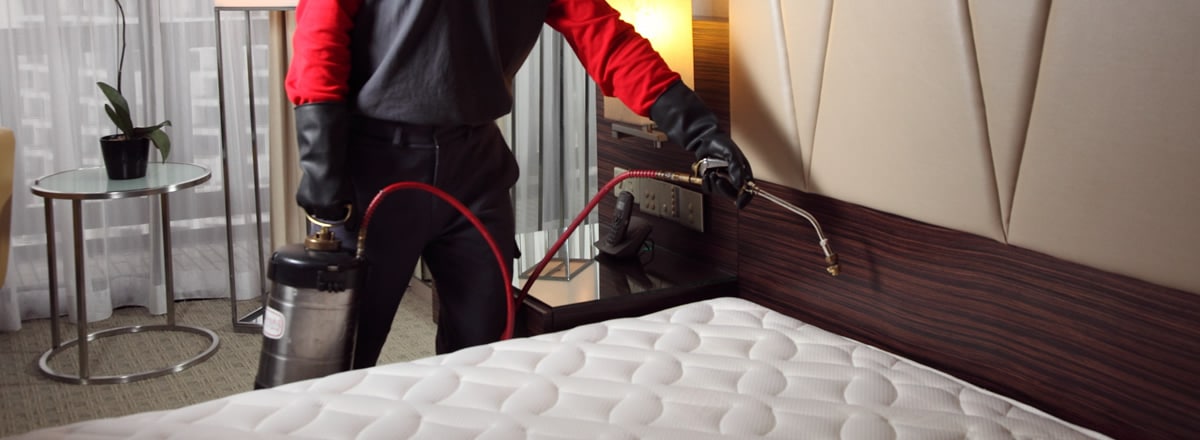Dealing with bed bugs can be a daunting and uncomfortable challenge. These tiny, elusive pests are experts at hiding and can quickly become a widespread issue in your home. However, with the right strategies and treatments, you can eliminate bed bugs and enjoy a pest-free environment. Here we will explore the most effective bed bug treatments and preventative measures to help you maintain a clean and bug-free home.
Understanding Bed Bugs
Bed bugs are small, nocturnal insects that feed on human blood. They are typically about the size of an apple seed and can be recognized by their reddish-brown color. Understanding their behavior and lifecycle is crucial in preventing an infestation or dealing with one effectively.
Lifecycle and Habits
- Eggs: Bed bugs start their lifecycle as eggs, which are hard to see without magnification.
- Nymphs: They then progress through five nymph stages, requiring a meal of blood before each stage.
- Adults: Adult bed bugs can live up to several months and can survive long periods without feeding.
Bed bugs are adept at hiding in dark, secluded spaces near their feeding areas—usually beds, couches, and other furniture.
Signs of a Bed Bug Infestation
Identifying a bed bug infestation early is key to preventing a widespread problem. Here are some signs that you might have bed bugs:
- Bites: Small, itchy bites that appear in a cluster or line on your skin, typically on exposed areas while sleeping.
- Stains: Rusty or reddish stains on bed sheets or mattresses caused by crushed bed bugs.
- Droppings: Dark spots (about this size: •) which are bed bug excrement and may bleed on the fabric like a marker would.
- Eggs and Shells: Tiny, pale yellow skins that nymphs shed as they grow larger.
- Live Bugs: Seeing the bugs themselves, though they are often elusive.
Effective Bed Bug Treatments
Treating a bed bug infestation involves several steps and can vary depending on the severity of the infestation. Here are some effective methods:
Heat Treatment
Bed bugs are sensitive to temperature, and heat treatment effectively kills these pests at all stages of their lifecycle. Professional exterminators use specialized equipment to heat the entire room or home to a temperature lethal to bed bugs (around 120°F or 49°C).
Cold Treatment
As with heat, extreme cold can kill bed bugs. Some professional services offer cryonite treatments, which freeze bed bugs using a very cold substance. This method is useful for treating specific areas.
Chemical Treatments
Various EPA-approved pesticides can effectively tackle bed bug infestations. These include pyrethrins, pyrethroids, and desiccants. Following the manufacturer’s instructions closely or hiring a professional to ensure safe and effective application is essential.
Encasements
Using mattress and box spring encasements can trap bed bugs inside and prevent new bugs from entering. This method does not kill them but can be part of an integrated pest management approach.
Home Remedies and Prevention
- Vacuuming: Regular vacuuming can help reduce bed bug populations.
- Washing and Drying: Wash infested bedding and clothing in hot water and dry them on the highest dryer setting.
- Declutter: Reducing clutter in your home can eliminate hiding spots for bed bugs.
Preventing Bed Bug Infestations
Prevention is always better than cure when it comes to pests. Here are some tips to keep your home bed bug-free:
- Inspect Secondhand Furniture: Check for signs of bed bugs before bringing used furniture into your home.
- Use Protective Covers: Protective covers for mattresses and pillows can prevent bed bugs from gaining access.
- Regular Inspection: Regularly check areas where bed bugs are likely to hide, especially if you live in an apartment complex where infestations can spread from unit to unit.
FAQs About Bed Bug Treatment
Q1: How quickly can a bed bug infestation spread?
A1: A single female bed bug can lay up to 500 eggs in her lifetime, and with enough food, the population can grow rapidly. An infestation can become significant in a matter of weeks.
Q2: Are bed bugs a sign of dirtiness?
A2: Bed bugs are not necessarily a sign of dirtiness. They are attracted to warmth, blood, and carbon dioxide, not dirt.
Q3: Can bed bugs spread diseases?
A3: According to the CDC, bed bugs are not known to spread disease. However, their bites can cause allergic reactions in some people.
Q4: How do I know if the bed bugs are gone after treatment?
A4: No new bites or signs of bed bugs (like droppings or eggs) are good indicators. It’s also wise to continue monitoring for several weeks after treatment.
Q5: Can I treat bed bugs on my own?
A5: While some DIY methods can reduce bed bug populations, completely eliminating them usually requires professional treatment, especially in severe cases.
By understanding bed bugs and the effective methods to combat them, you can keep your home safe and pest-free. Regular vigilance and quick action at the first sign of an infestation are key to maintaining a bed bug-free environment.


